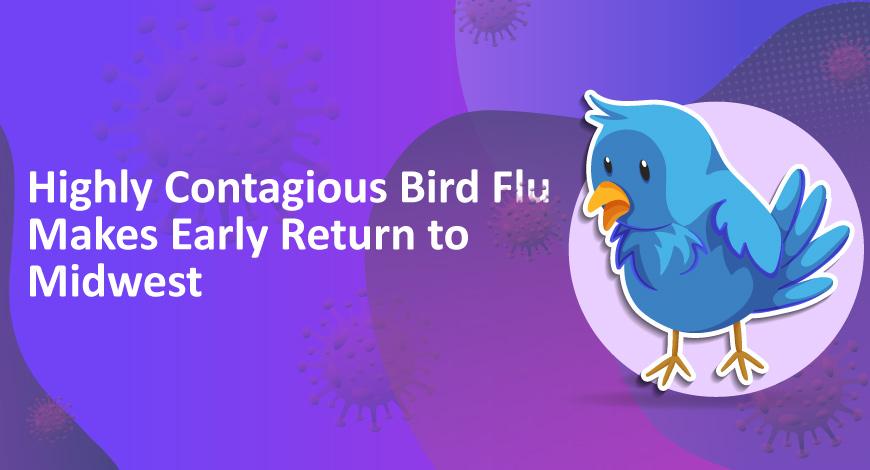Highly Contagious Bird Flu Makes Early Return to Midwest
The deadly bird flu has once again cropped up in the Midwest as the Wisconsin Department of Agriculture, Trade and Consumer Protection (DATCP) confirmed the first case of HPAI in a domestic flock since May.
The Minnesota Board of Animal Health said tests confirmed the disease Tuesday evening after a farm in Meeker County reported an increase in mortality.
Officials say the highly pathogenic disease was detected in two commercial turkey flocks in western Minnesota’s Meeker County and a hobby flock in Indiana also confirmed cases.
The authorities say that bird flu has returned to the Midwest earlier than they had expected after an interval of several months, highlighting the ongoing threat posed by Common Bird Diseases.
However, there have been several cases of bird flu in western states in July and August, including California, where more than six commercial farms have had to kill more than 425,000 chickens and turkeys since last week. There have also been cases in Washington, Oregon, and Utah, plus a few in some eastern states.
Kevin Hoffman, a spokesperson for DATCP, says there have been recent detections among wild birds in Wisconsin.
"The fall and winter could be a critical time for virus transmission, so DATCP urges all poultry owners to implement strong biosecurity measures to protect their birds from the disease," Hoffman said.
The board’s senior veterinarian, Dr. Shauna Voss has vowed to thwart the flu.
"While the timing of this detection is a bit sooner than we anticipated, we have been preparing for a resurgence of avian influenza that we dealt with this spring. HPAI is here and biosecurity is the first line of defense to protect your birds,” said Dr. Voss.
The hike in the prices of meat and eggs is the result of this year’s outbreak, along with the death of an alarming number of bald eagles and other wild birds. It also affected some zoos.
The bird flu is typically carried by migrating birds. It only occasionally affects humans, such as farm workers, and the USDA keeps poultry from infected flocks out of the food supply. A widespread outbreak in 2015 killed 50 million birds across 15 states and cost the federal government nearly $1 billion.







